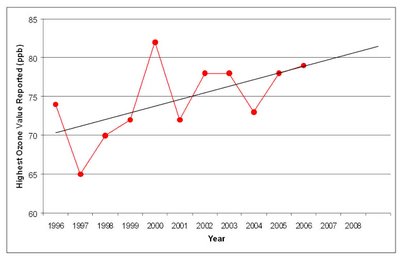Smog Reductions Planned for all of Colorado
Community health stands to benefit if smog reductions across the state of
Tomorrow, the Colorado Air Pollution Control Division is thankfully slated to propose that the Air Quality Control Commission approve new regulations to reduce pollution from oil and gas developments across the state. If adopted, the proposal would reduce emissions of smog forming compounds by over 90% from condensate tanks, glycol dehydrators, and internal combustion engines, which are contributing to rising smog levels, especially in western
Smog, also known as ozone, can lead to reduced birth weight among newborns, increased asthma attacks, wheezing and difficulty breathing among children, and irritated linings in the throat and lungs. Even at levels below federal health standards, children are at risk. A study in 2006 published in the journal Environmental Health Perspectives reported:
At levels of ozone exposure near or below currentWhen it comes to protecting our children, we can't wait for air pollution to become a problem before we act.
Monitoring in

At the same time, oil and gas development is booming throughout the state. According to the Colorado Oil and Gas Conservation Commission, record numbers of drilling permits have been issued. As of August 1, a total of 2748 drilling permits have been issued. This is more than the total number of permits issued for the entire years of 2004 and 2003.
Drilling Permits Issued by Year in Top 7 Producing Counties
| County | 2006 (as of August 1) | 2005 | 2004 | 2003 |
| | 898 | 1508 | 796 | 566 |
| Weld | 694 | 901 | 832 | 757 |
| Las Animas | 233 | 413 | 332 | 180 |
| | 157 | 161 | 54 | 27 |
| | 198 | 136 | 154 | 179 |
| | 143 | 115 | 102 | 162 |
| | 425 | 782 | 237 | 138 |
| TOTALS | 2748 | 4016 | 2507 | 2009 |
Studies by the Colorado Department of Public Health and Environment show that oil and gas developments are a significant source of smog forming compounds. In the

0 Comments:
Post a Comment
<< Home